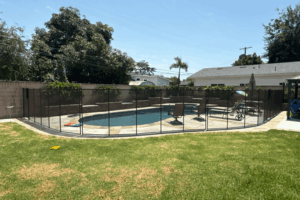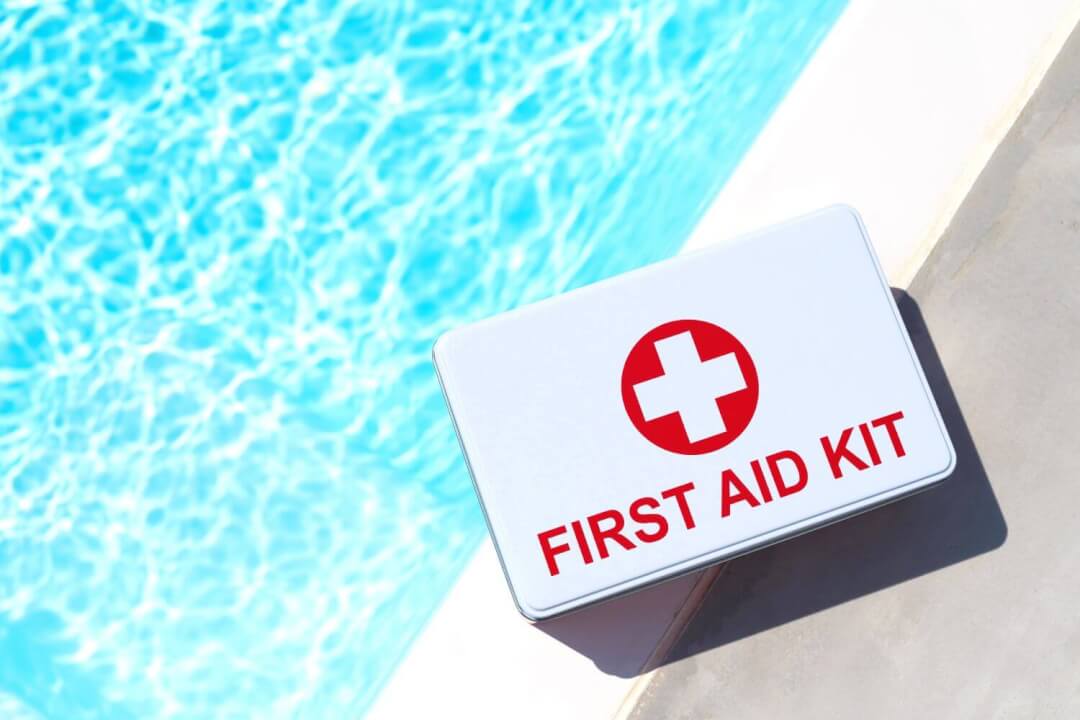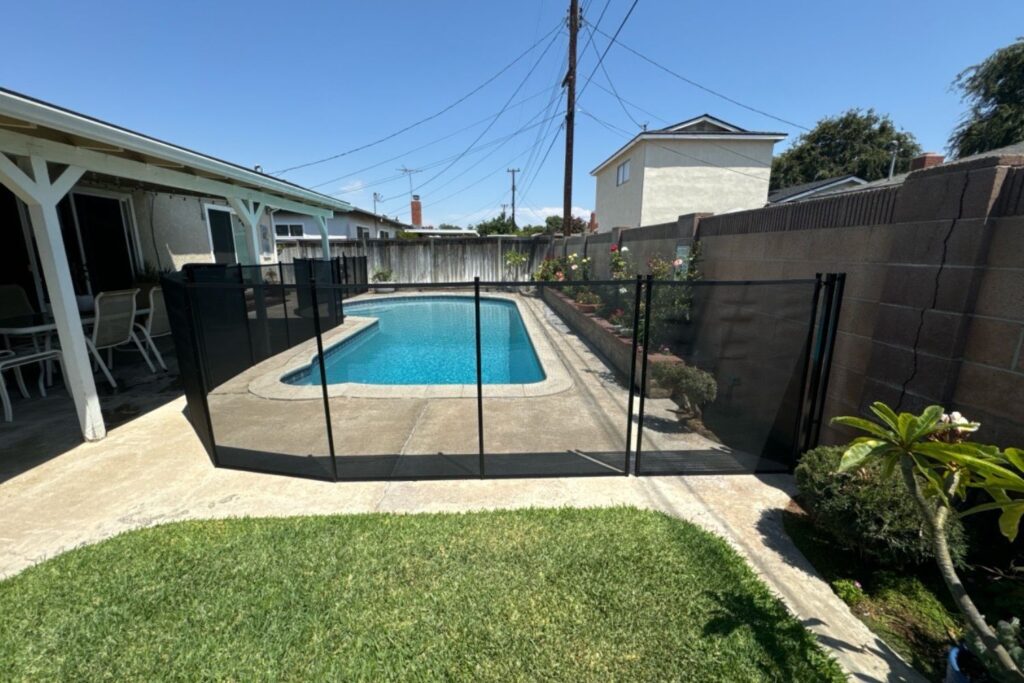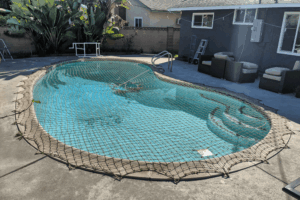
Do You Really Need Pool Safety Products If You Don’t Have Kids?
Think pool safety products are only for families with kids? Discover why fences, nets, and alarms matter for guests, pets, and liability, even if you don’t have children.
Home > Emergency Response Plans for Pool Accidents: A Family Guide

If you own a pool, you need to have a plan in place for swimming pool accidents. Even if you make pool safety a priority, accidental injuries can occur. An action plan can help ensure you have the right training and equipment to manage big and small accidents when they happen. Proper preparation can help keep accidents from becoming serious injuries or tragedies. Here’s a pool safety expert’s guide to being ready when something goes wrong.
Take the time to develop an action plan and discuss it with adult partners or helpers to ensure everyone is on the same page. The most important part of your plan is establishing the coordination beforehand, which cuts down on chaos and confusion at the moment.
If you could plan around them, they wouldn’t be swimming pool accidents. While accidental drownings get most of the pool safety attention because they cause thousands of deaths annually, tens of thousands suffer drowning-related injuries. Pools are also a prime location for scrapes and bruises, minor cuts, and contusions. Sprained joints, pulled muscles, and even broken bones are all possible. While you don’t need to set up a trauma center poolside, you do need to be ready to manage injuries and emergencies until aid is rendered or help arrives.
Your emergency kit should contain the items and equipment needed to aid in immediate intervention for serious swimming pool accidents and treat a wide range of minor injuries. That doesn’t mean it has to be huge or contain everything needed for every potential incident. You want a comprehensive and streamlined kit so that you can readily find the equipment you need to save a life in an emergency.
These are often handed out during CPR classes but are also available from most medical supply shops and some popular online retailers. If a swimming pool accident leads to drowning, these barriers make it safer for you to provide rescue breathing thanks to a one-way valve that prevents aspirated water from entering your mouth.

These emergency essentials will help you stop or control bleeding in an emergency. They can also help cushion wounds, support joints, or secure a splint if immobilization is needed. A handful of adhesive bandages in various common sizes can also let you respond rapidly to smaller, superficial injuries. Remember, this kit isn’t necessarily meant to provide the breadth of a full first aid kit but rather to give you the tools needed for the biggest urgent needs and a few smaller common ones.
These small wipes and towels help clean wounds efficiently so you can assess and bandage them. These are meant for minor to moderate wounds only, as swimming pool accidents that are more extensive or cause more blood loss will likely need immediate medical care, and you’ll be more worried about controlling bleeding rather than cleaning the wound.
While they may look flimsy, foil blankets can serve multiple purposes. They lock in body heat to make someone in shock more comfortable, create a waterproof barrier when water needs to stay out of a wound, and, when folded, help support more comprehensive bandaging or splinting.
Sure, you’ve been trained, but what if you’re the victim? Small booklets covering first aid essentials can be purchased for a few dollars or may be provided by local water and pool safety organizations.
While these may not be in your emergency kit, there are some items you’ll want to have at or near the poolside to help you prevent and manage emergencies in the moment or more fully treat their aftermath.

ASTM-compliant pool safety barriers maximize pool safety by preventing unsupervised access to the swimming pool area, reducing the risk of accidental drownings. They can also reduce other injury risks when properly installed and maintained. Swimming pool safety covers and nets can both support the weight of a full-grown person, and they provide a softer landing in a partially controlled fall than your pool deck area likely will. Covers also help keep shard objects that could cause cuts or puncture wounds from entering the swimming pool, where they may be more difficult to see. Finally, your removable mesh pool safety fence helps control traffic in and around the pool while also providing a bit of stability for those who need help steadying their walk, like the elderly.
Your local independent contractor is ready to help you prevent swimming pool accidents and improve your pool’s safety. Call for a free estimate, and they’ll take measurements, talk to you about your needs, and offer a tailored quote. Take the first step toward a safer pool with All-Safe Pool today.

Think pool safety products are only for families with kids? Discover why fences, nets, and alarms matter for guests, pets, and liability, even if you don’t have children.

When most people think about pool safety, they picture a

Not every city has the same pool safety requirements. Learn how to plan a code-compliant barrier system using fences, nets, or covers while meeting local standards.
Enter your zip code to locate an independent installer in your area
Enter your zip code to locate an independent installer in your area
Enter in your zip code to let us know where your pool is located.
Due to the many variations in monitors, phones, and browsers, color samples and product examples may appear different on different screens. Computers and mobile devices are not all calibrated equally and color reproduction on the Internet is not precise. The same is true for printed items such as brochures and other sales literature.
In addition, the colors of our products photograph differently under different lighting conditions. For example, photos taken in full sunlight will vary from photos taken on a cloudy or overcast day. Similarly, shadows from nearby objects can affect the color and transparency of our products. If a precise color or specific shade is important, please inspect the actual color of your product prior to installation.
Many of our products’ materials are not available through typical stores and vendors and therefore must be custom manufactured specifically for our use. In order to control costs and provide you with the best value possible, our raw materials are produced in large batches and can often take several months to receive. The colors of our materials can, and often do, vary slightly from batch to batch. Although we make every effort to minimize color variations, we cannot be responsible for these differences when they occur. If a precise color or specific shade is important, please inspect the actual color of your product prior to installation.
For example, we use the name “putty” to describe some of our products. Your idea of the color “putty” may be different than someone else’s idea of “putty”. In addition, products may have the same color name but may not be the exact same color. For example, we have different shades of “black”. Please do not order using color names as your only guide. If a precise color or specific shade is important, please inspect the actual color of your product prior to installation.
If it is important that your product be an exact color or shade, it is highly recommended that you inspect the actual product prior to its installation and address any concerns with your local independent installer. Most independent installers do not offer refunds or accept returns due to color variations.